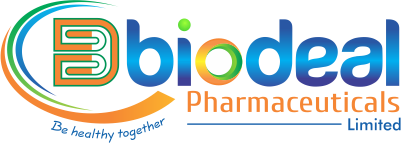To Buy Bactrim Online Visit Our Pharmacy ↓
 Bactrim Resistance: Causes, Trends, and Prevention Strategies
Bactrim Resistance: Causes, Trends, and Prevention Strategies
Genetic Mechanisms Driving Trimethoprim-sulfamethoxazole Resistance in Bacteria🧬
In clinical stories, microbes rewrite survival scripts: single nucleotide mutations and mobile elements alter drug targets and metabolic routes, transforming effective therapy into fleeting control as selective pressure sculpts communities.
Resistance spreads via plasmids and integrons carrying dfr and sul variants, while efflux pumps and enzymatic bypasses boost survival; regulation changes can upregulate resistance genes under antibiotic stress rapidly worldwide.
Horizontal transfer accelerates outbreaks and therapy failures, complicating diagnostics and empiric choices. Clinicians need precise testing, robust surveillance and stewardship to minimise misuse and aquire new tools with shared data.
Clinical Consequences of Bactrim Resistance on Patient Outcomes⚠️

A hurried clinic visit becomes a lesson when a young patient with a urinary infection fails to respond to bactrim. Teh initial improvement stalls, and clinicians scramble to choose alternatives. That uncertainty lengthens symptoms and raises admission risk.
Delayed effective therapy can lead to complications: bacteremia, prolonged fever, and higher mortality in vulnerable people. Patients may also recieve suboptimal care while awaiting susceptibility results; empiric escalation to broader-spectrum agents increases cost, adverse events, and resistance pressure.
The takeaway is clear: rapid diagnostics, targeted stewardship, and up-to-date local antibiograms help clinicians choose effective therapy and avoid escalation. Public health measures — vaccination, hygiene, and reducing agricultural antibiotic use — lower transmission and protect future patients from treatment failures. Clear communication with patients about expected course, signs of deterioration, and prompt follow-up reduces delayed presentations and prevents avoidable complications, admissions, and costs.
Global Surveillance Reveals Rising Resistance Patterns and Hotspots🌍
International surveillance networks now map antimicrobial resistance in near real-time, turning isolated reports into clear trends. Combined laboratory reports, genomic sequencing and clinical data reveal clusters where bactrim efficacy is eroding fast. These systems expose previously hidden hotpots, showing how resistance can spread across hospitals and into the community.
Patterns vary by region: urban centers with dense healthcare networks and rural areas with lax stewardship both surface as concern points. Surveillance ties resistance spikes to antibiotic use, sanitation gaps and travel corridors, guiding targeted interventions and resource allocation where they are most needed.
For clinicians and policy makers, these maps are a wake-up call: adapt empiric choices, bolster lab capacity, and invest in prevention. Timely data allow rapid containment of outbreaks before broad dissemination in the enviroment or healthcare networks. International collaboration and funding are critical to reverse rising trends.
Antibiotic Misuse and Agriculture's Role in Resistance Spread🚜

Teh farmer walks the rows of poultry, remembering solutions handed out like candy to prevent losses, yet the scene is also a lesson in unintended consequences. Widespread use of antibiotics for growth promotion and prophylaxis creates environmental reservoirs where bacteria exchange plasmids and integrons that carry resistance to common drugs, including bactrim; runoff and manure spread these determinants across soil and water, seeding human and animal pathogens.
On the clinic side, patients recieve infections that are harder to treat, lengthening hospital stays and driving use of broader-spectrum agents. Surveillance increasingly links specific resistance hotspots to agricultural practices, so curbing nontherapeutic use, improving waste management, and enforcing regulations are critical steps. Community education and prescriber stewardship can reduce demand for unnecessary antibiotics, helping a community-wide effort to slow resistance before it becomes irreversible. Policy alignment across sectors will be essential now.
Stewardship Programs Curb Inappropriate Prescribing and Overuse🛡️
In hospital corridors, clinicians weigh risks against urgency, guided by data and empathy. Teh stewardship teams analyze prescribing patterns, offering timely feedback and education to reduce unnecessary antibiotic exposure patients.
They track agents like bactrim, quantify resistance trends, and create decision tools that flag high-risk prescriptions. Audits encourage de-escalation and narrow-spectrum choices, protecting effective therapies for future patients and communities.
Success requires leadership, measurable goals, and Champions. Rapid diagnostics, dashboards, and feedback loops transform culture, reducing resistance rates and preserving options. Investments in training make stewardship sustainable across care settings.
Practical Prevention Strategies for Clinicians and Communities✅
Teh frontline clinician starts with rapid, evidence-based diagnosis and narrow-spectrum choices, balancing immediate care with stewardship. Narratives of successful de-escalation show reduced resistance when culture results guide therapy and teams review duration actively.
Communities lower transmission by promoting vaccination where relevant, hand hygiene, and accessible testing; public campaigns should be clear, culturally tailored, and sustained. Schools and care homes can implement simple protocols to curb spread and monitor outbreaks.
At institutional level, antimicrobial stewardship teams audit prescribing, provide rapid feedback, and support decision tools. Education for prescribers that blends case stories with local resistance data improves adherence and reduces unnecessary Bactrim use across units.
Finally, clinicians collaborate with public health to track resistance trends, regulate antibiotic access, and limit agricultural drivers through policy. Small, coordinated changes in prescribing, monitoring and education at scale yield measurable community benefits. Learn: CDC PubMed
